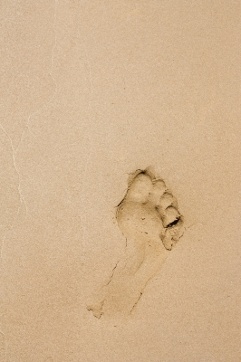Why Are Bunions so Painful?

How many times have you noticed someone with a bumpy toe on the foot? The answer is- more often than you think because bunions are that common. Bunions are bony protuberances (bump) at the base of the big toe. They are one of the most common causes of foot pain and a visit to the local orthopedic surgeons clinic office.
The tissues of the great toe get pushed up backwards against the main bulk of your foot because of tight shoes, high heels or ill-fitted shoes. Bunions may also arise due to a congenital foot defect like talipes equines or from pre-existing rheumatoid arthritis or osteoarthritis. Any occupation that keeps you standing for long might also give rise to a bunion. Other risk factors include obesity, gait deformities, prolonged wear and tear of the foot. Bunions can occur at any age but typically are seen in the middle aged adult.
The soft swelling at the joint base then keeps growing slowly without any symptom sometimes, so that most people keep ignoring the bunion till it starts hurting. A small bunion that develops at the base of the little finger is called a bunionette.
The pain is terrible and worsens while walking or running. The pain might also cause restriction of movement of the joint. The toe becomes red, swollen and tender to touch and if left untreated, might be painful even at rest. It slowly starts hampering your walk and changes your gait. Occasionally a corn or callosity might develop on the sole at the site of the bunions because of the constant pressure.
The diagnosis is based on purely clinical acumen and no confirmatory blood tests or imaging procedures are really helpful in cinching it. An x-ray is needed to help judge the severity of the bunion and rate the need for surgery. The earliest way to remedy the pain is to get the foot out of the culprit shoe and give it an ice pack. The ice will cool down the throbbing pain and prevent further swelling. An over the counter pain-killer or aspirin will give relief from the pain till you can access a professional foot doctor like an orthopedic surgeon. Wearing comfortable shoes and rare use of high heels is a wiser choice for long term care. Padded shoes and inserts go a long way in preventing further deterioration. As the bunion keeps growing, the need for corrective surgery becomes more and more unavoidable to relieve the pain.
Bunion surgery involves removal of the excess inflamed tissue from the base of the joint, straightening out the bent angle of the foot and fusion of the bones of the affected joint. Recurrence can only be prevented by taking adequate foot care as mentioned earlier.
Image courtesy of Sura Nualpradid / FreeDigitalPhotos.net
Dr. Meredith Warner is a board certified, Fellowship Trained Foot and Ankle, Orthopedic surgeon practicing in Baton Rouge, Louisiana. Dr. Warner is committed to offering her patients an accurate diagnosis along with a comprehensive treatment plan in order to get them back to a pain free life. Dr. Meredith Warner specializes in the treatment of orthopedic issues, providing operative and non-operative treatment plans of orthopedic problems, including musculoskeletal pain such as chronic back, neck and foot pain, reconstructive surgery of the foot and ankle, arthritis, diabetic, hammer toe, bunion, wound care, work injuries, fitness and nutrition and osteoporosis issues.




